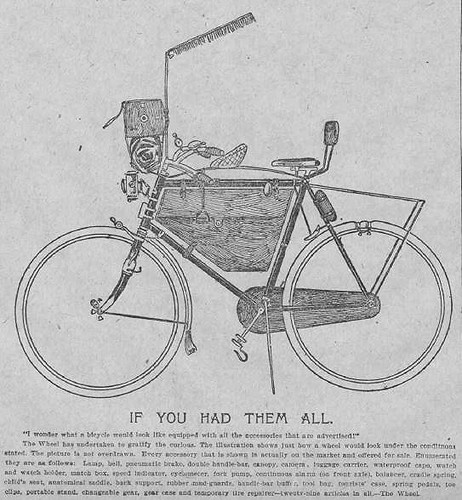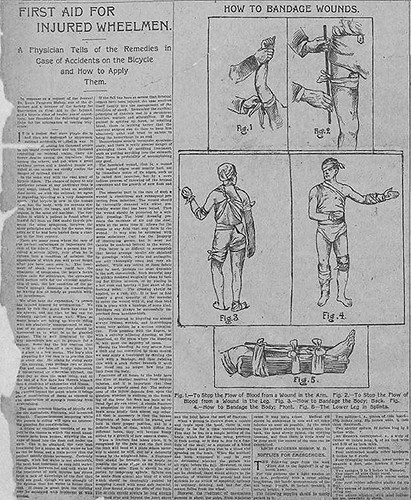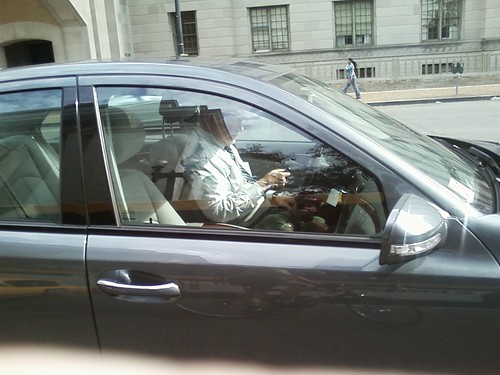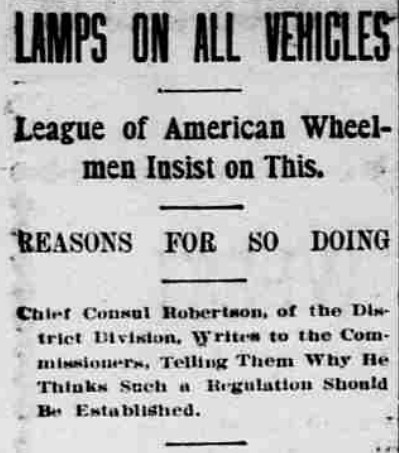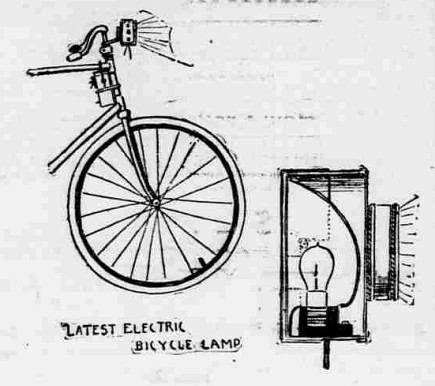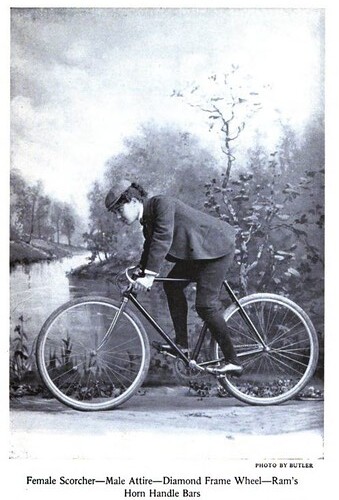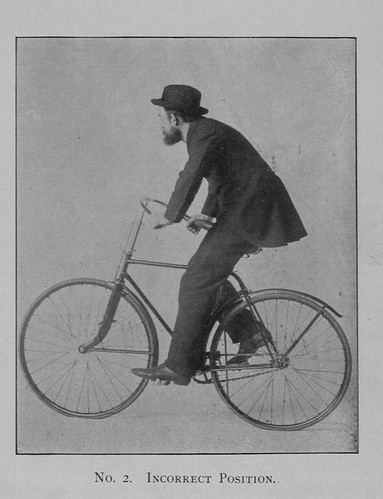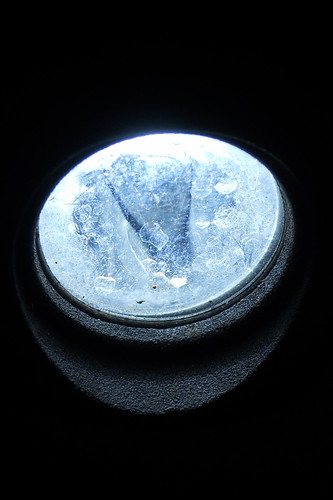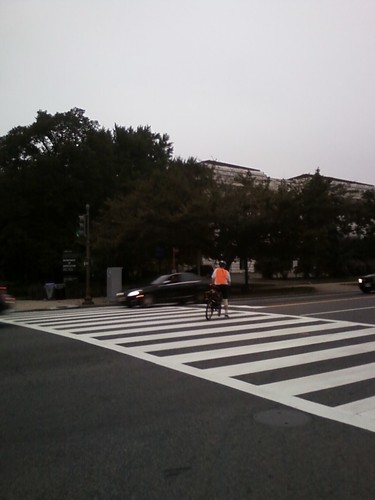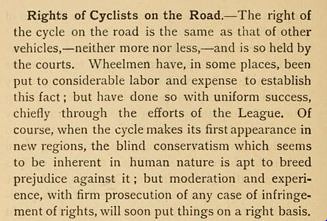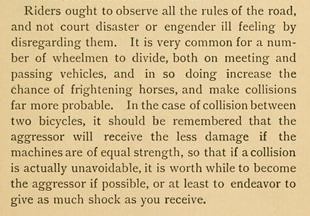 Urban Bikers' Tricks & Tips
Urban Bikers' Tricks & Tips by
Dave GlowaczMy rating:
1 of 5 starsI'm not going to pretend this is an unbiased book review - after I got annoyed by some of what the author said on certain subjects, I realized I could nitpick the thing here there and everywhere - in a box, with a fox, and so on. So, off we go!
My main complaint about this book is that it is chock full of really dumb so-called advice. Self-styled as
"Mr Bike" the author says he is a certified instructor for the League of American Bicyclists - presumably for LAB courses he teaches he sticks to their instructional materials because I doubt they would support his more dubious and often outright illegal suggestions.
Mr Bike's view is that one can be a "sly biker" who "knows how to read traffic well" and therefore can "beat traffic without scaring peds or making motorists hit their brakes." That all sounds pretty good, but his specific strategies can be questionable - with yellow lights, he advocates "maintain your speed" when looking at an oncoming car waiting to turn left, but "be ready to go round the car, stop, or make an emergency turn." Slow down? No, that would "make yourself a target."
Much of the "sly biker" advice is situational and detailed and I think kind of absurd. There are six pages of left turn scenarios! This advice typically assumes that you, the reader, have little ability to think through such things on your own, that instead you will remember Mr Bike's book and that on page 86 he covered this very type of thing and you should . . . no, that ain't gonna happen. Of course since Mr Bike seems to have little of what I consider common sense there is no particular reason for him to think you have any, either.
The bike does have bike selection and mechanical troubleshooting sections, but they aren't as detailed as the left turn information. I don't know what to do with a book that says that for a rubbing derailleur, for example, that the solution is "have a mechanic clean and adjust the derailleur."
At various places Mr Bike admits some of his advice isn't legal, but I can't really see why a LAB instructor should be advocating under "what to do about conflicts [with motorists]: fight back" that you can "grab the antenna and bend it as you go by." A helpful sidebar does opine that "in most fights between cyclists and motorists, cyclists lose." But to try to even the odds, Mr Bike notes that a U-lock is potential weapon and there is a section on acquiring and using pepper spray.
 This illustration of bicyclist self-defense from 111 years ago is better than what I observed in Mr Bike's book
This illustration of bicyclist self-defense from 111 years ago is better than what I observed in Mr Bike's bookMr Bike contradicts himself. Much of his advice advocates the sort of cyclist behavior that motorists do in fact notice and that increaes the present motorist-cyclist friction - but in places he shows an awareness that it would be good if folks thought better of cyclists - "when biking in crosswalks or on sidewalks, slow down and always yield to people walking. That way peds will think well of bikers." Until the peds get back into their cars and meet you on the road, anyway, if you follow this book's advice.
Mr Bike's use of statistics to make some points is peculiar - for example, in a sidebar advocating cycling on roads, he notes "you've already taken bigger risks - more bike crashes happen on off-street paths than in traffic. Why? On paths, people bike next to walkers, runners, skaters." Well, yes - if by "bigger risk" he means risk of a crash, that's true, but the risk of a serious crash as far as consequences to the cyclist are higher when you are out with the cars.
Under "special techniques" he advocates drafting behind motor vehicles - vans are good if you can see through their windows, now there is a helpful hint - and "skitching" (grabbing onto a vehicle) and hitching a ride. One is just dumb and the other is both dumb and illegal.
My daughter commented, "maybe he is just kidding?" I wish.
In addition to all that, there is a "do it on the cheap" advice that I think isn't very good. For example, there is a complex explanation of how to build a "do it yourself" headlight system for less than 100 bucks, but even when the most recent edition of this book was published you could buy over 100 lumens of LED headlight for under $100 - now you can get 150 lumens for say $65. No urban biker needs more than that.
The title page lists 11 illustrators and two photographers whose efforts contribute to an extremely random and often busy graphic look for most pages. (Just thought I'd add that while I'm complaining.)
On the plus side, the photographs of how to load a bike onto a transit bus bike rack were taken in Seattle and are so old, the buses are ones that I drove when I lived there more than twenty years ago. (No, I don't recognize individual buses, just the series numbers.) Seattle no longer uses bus bike racks like the one shown in the book, but most cities do, I think. Mr Bike makes loading a bike into such a rack into an 11 step process that looks pretty complicated.
I could go on, but I think you get the idea.
I think there is more useful good advice in this 1896 Washington Times article I
blogged about earlier that includes such common sense suggestions as "Many of the accidents we read of every day could be avoided if the riders would regulate their pace according to their skill in managing the wheel under difficulties" and "Do not ride in the middle of a path or driveway. You are liable to meet with an accident, and cannot recover for damages to your wheel unless you observe the rules or the road." Or my favorite - "Always preserve your dignity and pay no attention to small boys or dogs, both of which are perfectly harmless to the average wheelman."
I'm not sure "dignity" is in Mr Bike's vocabulary.
View my list of cycling books and reviews in Goodreads.
